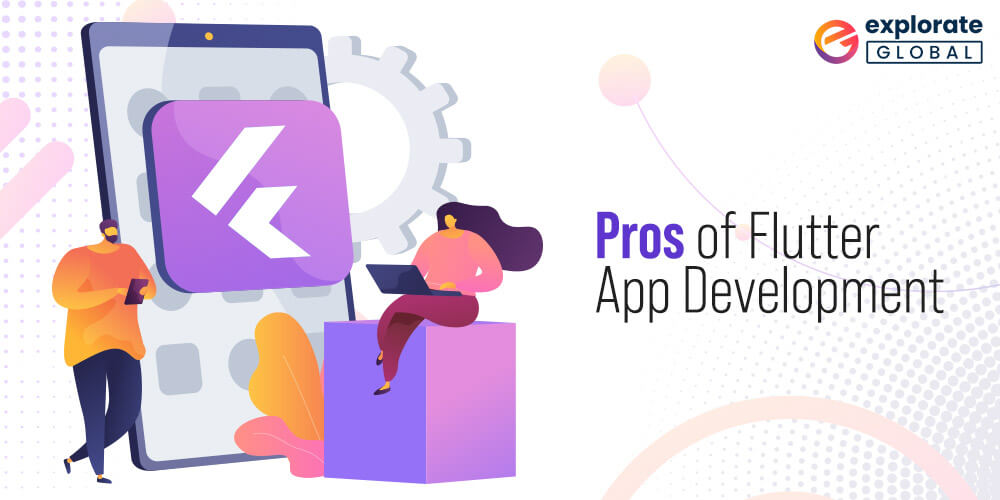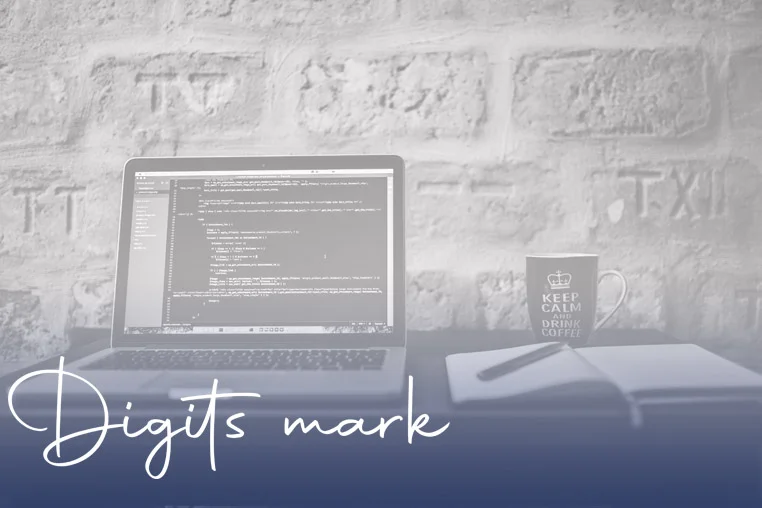Introduction
Flutter is the newest framework to make a splash in the world of mobile app development. Here, we delve more into what the Flutter framework is, its benefits and drawbacks, as well as the different ways to test a Flutter application.
If you are wondering what Flutter is exactly, what all benefits it consists of, how it is different from other cross-platform frameworks, here are all the answers to your questions. Flutter is an open-source UI software development kit released by Google which is used to build natively compiled applications across all devices like mobile, web, and desktop from a single codebase. Instead of writing individually different code for both IOS and Android platforms, thanks to flutter, you have to write a code for once and your application will appear perfect and will replicate the native experience exclusive to the platform.
Content table
-
Introduction
-
What Is the Flutter Framework?
-
Why Is Flutter Used?
-
Pros and Cons of Flutter App Development
-
Mobile Applications Built With Flutter Development Framework
-
Top Mobile Apps Built On Flutter
-
Is Flutter best for Web Development?
-
Frequently Asked Questions
What Is the Flutter Framework?
Flutter is Google’s free and open-source UI framework for creating native mobile applications. Released in 2017, Flutter allows developers to build mobile applications for both iOS and Android with a single codebase and programming language. This capability makes building iOS and Android apps simpler and faster.
The Flutter framework consists of both a software development kit (SDK) and their widget-based UI library. This library consists of various reusable UI elements, such as sliders, buttons, and text inputs.
Developers building mobile applications with the Flutter framework will do so using a programming language called Dart. With a syntax like JavaScript, Dart is a typed object programming language that focuses on front-end development.
Why Is Flutter Used?
Although Flutter is a newer cross-platform framework, more and more companies have chosen Flutter over frameworks such as Xamarin, Cordova, and React Native.
Some of the top reasons why development teams choose Flutter include:
- Increased productivity. Using the same codebase for iOS and Android saves both time and resources. Flutter’s native widgets also minimize time spent on testing by ensuring there is little to no compatibility issues with different OS versions.
- Easy to learn. Flutter allows developers to build native mobile applications without needing to access OEM widgets or use a lot of code. This, in addition to Flutter’s particularly appealing user interface, makes the mobile app creation process much simpler.
- Great performance. Users report that it is difficult to notice the difference between a Flutter app and a native mobile app.
- Cost-effective. Building iOS and Android apps with the same codebase is essentially building two apps for the price of one.
- Available on different IDEs. Developers are free to choose between Android Studio and VS Code to edit their code on Flutter.
- Great documentation & community. Flutter has many great resources to answer your questions, thanks to its ample documentation with easy-to-follow use cases. Flutter users also benefit from community hubs like Flutter Community and Flutter Awesome for exchanging ideas.
Pros and Cons of Flutter App Development
Let’s take one step ahead and do a slightly more in-depth analysis of all the pros and cons of Flutter app development, as we have already talked about how it all began and how Google’s Flutter became an immensely valued app development framework. We’ll now discuss all the features that make Flutter developers happy and their jobs stress-free. We’ll also look into possible bottlenecks that fall under the ‘cons’ category but we hope this could soon be resolved.
Advantages of Flutter Mobile App Development

Pros of Flutter App Development
#1 Hot Reload
The wonderful hot reload feature makes developing apps with Google’s Flutter a breeze. It’s the feature that has gathered the most excitement and compliments from Flutter developers all over. Remember the times when you had to reload the entire application to view the slightest of changes you made to the codebase? Well, you don’t have to do it anymore.
With Flutter, every change or modification you make to the code is reflected in the app in real-time. Hence, you can make changes on the go and test as many variations as you wish, seeing exactly how they affect the app right on your screen. So go on, with Flutter’s hot reload feature try all your new and innovative ideas, add new features, experiment with the code, and fix bugs on the go.
#2 Code Reusability
Writing code for building an iOS app and then writing another individual codebase all over again from scratch for the Android version of the same app is by far the major time-eater in native app development. It is as much work as building two apps, but in the end, you only get one.
Flutter’s code reusability allows the flutter developers to write just one codebase and use it on not only Android and iOS platforms but even on the web and desktop. This cuts the development time and lets you launch your app much faster.
#3 Higher Quality
With the help of the hot reload feature of Flutter app development, code irregularities, and bugs can be spotted in real-time, which allows the Flutter developers to fix them right there. This leads to spending less time testing the app and accelerating the time-to-launch. Also, fixing bugs in real-time leads to a much higher quality app that loads fast and performs better across multiple devices.
#4 Faster Apps and Better Design
Apps that load slowly are uninstalled fast by the users. If your app has been loading slowly and taking long to respond, you may already be losing customers and trailing way behind your competitors. Apps developed with Flutter are faster to load, which means your user will immerse in the experience quickly instead of waiting for it to load and wondering if they should just abandon it already.
Google’s Flutter uses the Skia Graphics Library which is a fast and advanced open-source library with a solid backend. It every time draws the UI again as a view changes, resulting in fast loading of apps as it delivers up to 60 frames per second. This results in a fast and smooth app experience that users love. Flutter’s custom widgets are a complete pleasure when it comes to rendering UI. This not only helps you create great visuals for your app but also manages to do this with incomparable ease and promptness.
#5 Ready-made widgets for fast UI coding
Widgets are one of the revolutionary things that help you to create a user interface utilizing these building blocks. Any object in Flutter is a widget, from a button to padding or even fonts. Widgets can be united to build layouts, and you can pick to use widgets on any level of customization, from present building blocks to the lowest level when you create your widgets with the same tools. Widgets available in Flutter are well organized in trees, which is handy for rendering, but may result in too much complication of the whole structure. The UI development and customization that usually takes a long time to finish in cross-platform development takes a minimum amount of time with Flutter app development tools.
#6 Mild Learning Curve
Another important reason why Google’s Flutter is gaining popularity among developers is the availability of detailed documentation and a large number of examples. And this is very essential for developers who want to learn a new platform or a set of tools. Flutter’s Dart programming language is the easiest thing to learn. Many developers with slight coding knowledge can build prototypes and apps with the flutter framework. The mobile app development experience will not weigh into flutter programming.
And it is particularly important for experienced developers too, who already have an eye on flutter app development, as they can easily find errors in the language design or in the toolkit itself. Flutter app development is loved for its clear documentation and friendly community of developers, bringing together experts and novices who are ready to help and share the experience of their design models and development templates. A friendly atmosphere reigns here, facilitating the easy development of technologies by an extensive range of users.
Disadvantages of Flutter Mobile App Development

Cons of Flutter App Development
Yes, there are some cons we can put on this list, as Flutter language is not matured at the moment. However, cons in flutter app development aren’t exactly deal-breakers, they’re more like a list of possible enhancements we can expect in future updates as there is a lot of rooms to grow, expand, and get better.
#1 Large App Size
Flutter apps are inclined to be a little heavier in size so if you are considering developing a light app, Flutter app development could show a little hurdle in that path. Now for some cases, file sizes could be a significant issue and cause a developer to pick an alternative tool for the development. As we can see and find enough memory storage space on the phone and that does not occur everywhere in the world with most of the users. However, this file size offers you enhanced runtime and performance so it’s not easy to comprehend the audience you are appealing to.
#2 Lack of Third-Party Libraries
Third-party libraries and packages have an important impact on software development as it allows some significant features for developers. These third-party libraries are usually free, open-source, pre-tested, and easily accessible. However, since Flutter’s Dart programming language is new for mobile app development, it’s not easy to find such free packages and libraries as the tool is still in the growing phase and refining. It will take some time to create the necessary flutter app development tools, expand functionality and develop the community.
#3 iOS Issues
Since Flutter is developed by Google, developers are technically concerned about its implementation for iOS. There’s no doubt that building Android apps on Flutter is fast and pleasant as Google is directly intent on fixing bugs in the shortest amount of time. But what about iOS devices? For example, when you click pictures from Apple devices, the application erases all EXIF data. As a result, the photo is displayed with the incorrect orientation, with no location, no date, and without the correct gamma. One of the biggest updates in the Flutter app development is a pixel-perfect iOS appearance. iPhone settings were created on the flutter framework to allow the Cupertino widgets. However, It’s still uncertain if updates will keep coming as fast as Android’s version when the product will finally leave the beta phase.
Mobile Applications Built With Flutter Development Framework
There are presently over fifty thousand Flutter apps on Google Play as it is rapidly adopted by the developer community. Google’s Flutter development is constantly gaining traction and several flutter app development companies came into existence. Google leads by example, with Google Assistant or Google Ads utilizing the SDK. Here are some of the best flutter apps examples.

Top Mobile Apps Built On Flutter
1. Alibaba (eCommerce)
The world’s biggest e-commerce company is among the big market players that trusted Flutter app development. Alibaba’s Xianyu has about 200 million registered users, with 50+ million downloads developed with a flutter app and is the finest flutter apps example. The app developers praise the flutter app development tool’s impressive UI/UX capabilities and easy maintenance, but it was the speed of app development that got them sold on the Flutter framework.
2. GroupOn
The leading discount market required to makeover its merchant-facing app, streamlining campaign management, extending payment data visualization roles, and refining the voucher redemption skills. Instead of rewriting the existing app from scratch to add these improvements, GroupOn integrated Flutter app development tools into the native code which makes this app one of the best flutter apps examples available in the market.
3. Realtor.com
The dynamic real estate app uses the distinctive Flutter app development to help people find their dream homes. With listings updating in real-time, Realtor’s app had no time to waste, and Flutter development came in handy. The company has integrated Google’s flutter development into their existing Android app framework and iOS apps to provide seamless UX across screens and platforms with intuitive, high-quality photos, artistic graphical components, and rich visualization.
4. Reflectly
Reflectly is an AI-driven personal diary and mindfulness lifestyle assistant. It is an inspiring flutter app example that was first created with React Native and then migrated to Flutter. The transition resulted in improved cross-platform portability and allowed for the integration of cutting-edge technologies such as machine learning and NLP.
5. Philips Hue
Philips Hue – The smart lighting solutions that can be operated from your smartphone and create vibrant automated solutions for your home. Flutter app development became their perfect solution as they needed an app with intuitive controls, one that would provide real-time sync for the smart lights to the media hub.
6. Hamilton Music
Hamilton, the hit Broadway musical looked-for an app with a rich feature set that was graceful, worthy, and fast. Their first thought was to go the predictable way and create two native apps, one for Android and one for iOS. But that was going to take way too long and they were anxious that they would never have the rich feature set they wanted. Flutter language gave them just the resolution they looked-for, a rich app accessible to anyone on any device and that too available in record time.
7. Hookle
Hookle is a social media app for small businesses that enables viewing, composing, and rolling out SM posts to multiple platforms from one place. Initially, Hookle developers intended to deploy a native app to the Android app framework only, concerned about the speed and cost of delivery to multiple platforms, but they revisited the approach once they discovered the Flutter app development.
8. EntrenaPro
EntrenaPro is a mobile fitness app popular in Spain, uses a Flutter programming language to connect athletes with coaches and sports centers in the vicinity. According to the flutter app developers, it allowed them to meet very close-fitting deadlines for product delivery while providing critical components to accomplish the lightweight.
Is Flutter best for Web Development?
If you want a web application that works smoothly on any platform, written once, has a faster time-to-market, offers flawless UI at a lower cost, then flutter web development is ideal for your project. There are very few particular instances where you do not want to implement Flutter.
On the contrary, if you need a 3D touch application, Flutter web development doesn’t entirely support that for now. You might find flutter just a bit monotonous if your application needs heavy contact with computer hardware like a camera or phone calls. Flutter web applications seem to be on the heavy side if you’d like a relatively smaller version of the app. Although developing an eCommerce store with flutter mobile and then porting it to the web could be impractical for anyone, there will still be areas where flutter could fit well, like:
- You already have an application developed using flutter app development tools but want to offer a web app to users to do the same function.
- You would like to create interactive and original pieces of content on the mobile app and do not want to waste time creating the same stuff on the web application again.
Frequently Asked Questions
Is it worth investing in Flutter app development in 2022?
Of course, Flutter is one of the most advanced mobile technologies out there. There are numerous reasons why experts believe Flutter will be the indisputable king of mobile apps in 2022. The business advantages of Flutter are substantial. Like every innovation, it has few limitations. Still, its various benefits unquestionably overshadow the few shortcomings, and Google’s backing makes it a solid candidate to dominate cross-platform mobile app development shortly. Flutter gives you unquestionable benefits like faster development and cost savings. These benefits can be a game-changer when it comes to using your funding cautiously and getting your product to market faster. Faster development allows you to validate your MVP idea faster, begin user testing early on and save money.
Is flutter a programming language?
Flutter is not a programming language, it is a software development kit (SDK) with prewritten code, containing ready-to-use and customizable widgets, along with libraries, tools, and documentation that together help to develop cross-platform apps. Flutter’s language for cross-platform development is Dart, which was built by Google. Flutter avoids using a bridge to connect with the native layer (such as Android or iOS). This reduces performance issues and increases app startup time.
Obviously, Flutter having its own programming language means that to get your app developed, you’ll require developers to code in Dart. However, Dart is pretty similar to Java, .Net, Kotlin, Swift, or JavaScript development and it’s comparatively easy to learn.
Is flutter development a good choice?
The answer is yes. Flutter supports web content generation by standards-based web technologies: HTML, CSS, and JavaScript. Based on the web support, you can compile the present Flutter code written in Dart into a client experience embedded in the browser and deployed to any web server. You can use all the characteristics of Flutter, and you don’t require a browser plug-in. Flutter for the web is presently available as a technical preview. If you’re still considering the significance of Flutter in mobile and web development, Flutter is all set of high standards and undeniably sounds favorable for the future.
Which is better: Flutter or React Native?
Flutter is a strong competitor to React Native but at some points, flutter overtakes React Native and vice versa. On the whole, both Flutter and React Native are powerful choices for cross-platform app development ensuring a convenient app development experience to the developers. If you want to develop a light weighted application or modify the existing app with cross-platform sections, React Native is the best choice. But, if you have a tight budget and need to customize the UI with widgets, then Flutter aces the contest. React Native and Flutter both have their own set of advantages and disadvantages. Flutter App Development is still new in the market but React Native made its inception way before to gain a good viewers ground.
How much does it cost to develop a Flutter app?
There is no particular price range. The cost of Flutter app development depends on various factors such as the size, app categories, app complexity, and the number of features you want in your app. The cost also varies according to the developer’s experience and the countries where the development team centers. Flutter is a free, open-source platform, so you can simply skip the license fee and reuse the codes to create an app for other platforms without hiring extra developers.
Is Flutter the Future of Mobile App Development?
Yes, in our experience Flutter provides a proven record that this framework has all prospects to be a great choice for developing mobile applications. It allows you to develop mobile applications with a better user experience, robust performance, effective programming, and huge time and effort saving. It has all the essentials to build robust and efficient mobile apps in minimal time. A flutter is a reasonable option that will make your project beneficial. As a result, you’ll acquire a fast, scalable, and safe modern application with high performance.


